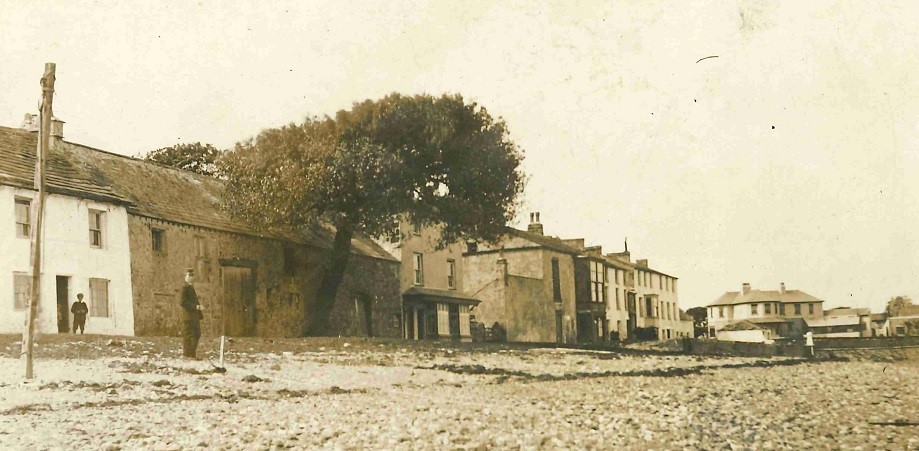Sunderland Point was probably first recorded in 1246 as ‘de Sinderland’ and then in 1262 as ‘Sunderland’
This is not an uncommon name and it very much means what it says on the tin. It is Old English (Anglo-Saxon) meaning ‘separate or detached land’.
This might not necessarily be geographical – monastic lands might be viewed as ‘detached’. However in the case of Sunderland Point it is clearly detached, or sundered, twice a day by the tide.
Sunderland Point has an interesting history. It was developed as a port from around 1680 and particularly in the 1720s. The port and the boat building failed completely once Glasson Dock opened in 1787.
But by the early 1800s the village was competing with nearby Poulton, Heysham and Hest Bank for its sea-bathing, with two inns and a bathing machine. However, by around 1830 Poulton was outstripping the others and Sunderland Point returned to being a farming and fishing village.
The photo shows Sunderland Point around 1900. The tree was said to be a cotton tree, although others say that it was a Kapok tree from the West Indies. Whatever it was, it was almost certainly brought to Sunderland Point as a result of the transatlantic trade. Blown over in 1998, it’s stump still remains.


